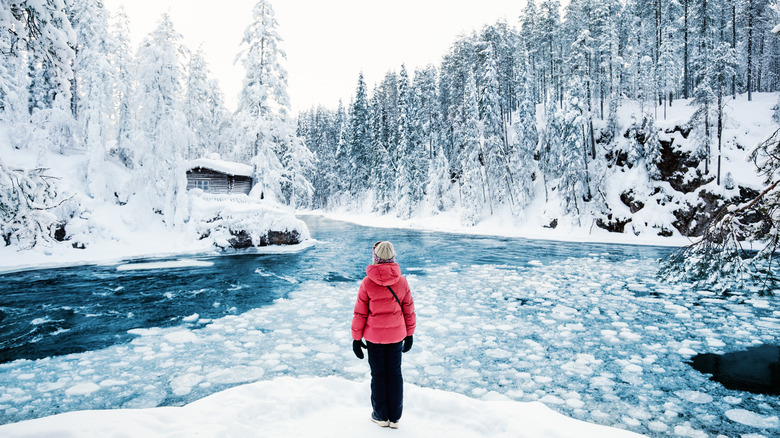A visit to a national park in winter is never a bad idea. Europe has many fantastic options to choose from. Embark on a snowshoeing journey across the snow fields in Finland, conquer the high peaks of the mesmerizing French Alps, witness the glory of tall waterfalls in Croatia, or let your breath be taken away by the sublime beauty of the Ligurian coast in Italy. There are many wonderful things to do and places to visit on the continent. The colder months also open the Northern Lights hunting opportunities, and Scandinavian destinations have national parks to do that while staying in ice huts and igloos.
It will be about cross-skiing, paragliding, scenic hiking, coastal walking, alpine wildlife watching, toboggan running, rock climbing, and dog-sledding. The list of adventures just doesn’t stop. European national parks are simply perfect for enjoying the great outdoors. This destination roundup uses travelers’ opinions from Tripadvisor and Google and includes our expert knowledge of visiting the selected parks in winter. So, choose your next destination and head there for some of the best winter adventures in your life.
Plitvice Lakes National Park, Croatia
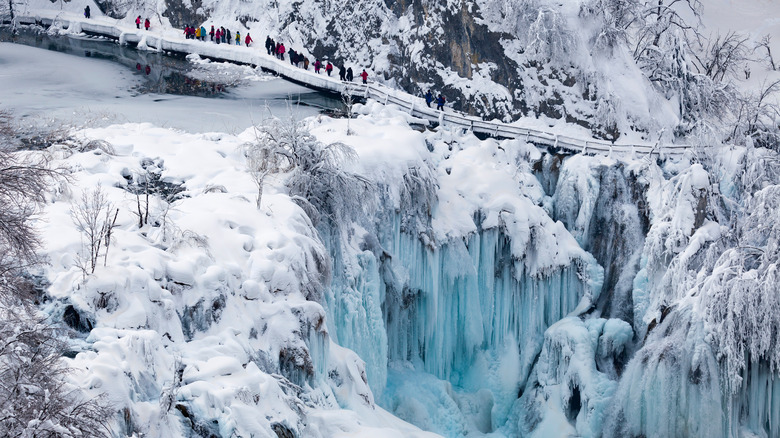
UNESCO-protected Plitvice Lakes National Park in Croatia is an enchanting place to visit. Coming here, you’re entering the spellbinding kingdom of cascading turquoise lakes and hidden caves. Winter months completely change the panorama, adding ice and snow to accentuate the fairytale-like appearance. Seeing partly-frozen waterfalls while gliding through the crystal-clear lake in a boat is an unforgettable experience. All the exploration of the park is done using the photogenic wooden pathways with bridges over the bodies of water, another charming detail. You can also ski and slide on the slopes of the Mukinje Ski Resort, about 2 miles from the park’s Entrance 2.
Officially the most visited natural park in Croatia, Plitvice Lakes National Park recorded a whopping 1.2 million visitors in 2022. Summer is the peak season here when the narrow wooden trails get very crowded. Visiting in winter allows you to have a much more tranquil rendezvous with the lakes, a truly magical and more sustainable way to see this natural gem.
Dolomiti Bellunesi National Park, Italy
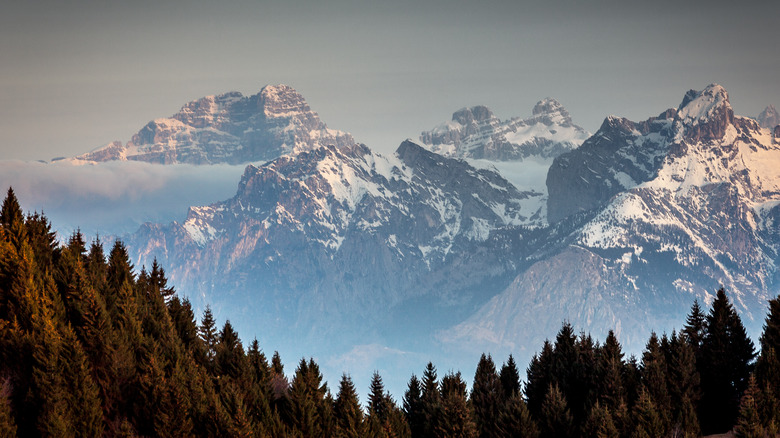
Boasting around 120 square miles of area, Dolomiti Bellunesi National Park is among the most spectacular natural attractions in Italy. The park encompasses a series of mountains that are part of the Alpi Feltrine range in the UNESCO-protected Italian Dolomites, and it’s a sight you wouldn’t want to miss. The craggy summits tower over forested valleys, and azure lakes reflect all this glory. We’re talking peaks over 6,500 feet everywhere you look; this national park is an ideal destination for those seeking to experience a sense of smallness.
Dolomiti Bellunesi is a year-round paradise for hikers. A well-marked trail infrastructure makes exploring the magical valleys and high-altitude pathways pleasurable. You can find the complete collection of hiking trails in the Dolomites in this brochure prepared by the Belluno province. Before embarking on the mountain journey, be sure to check the weather conditions; winter is charming but unpredictable at high altitudes.
Bohemian Switzerland National Park, Czech Republic
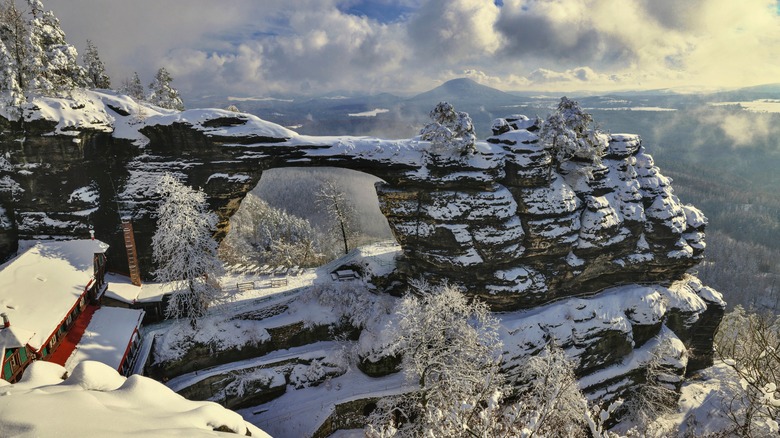
Miroslav Srb/Shutterstock
Rocks rule in Bohemian Switzerland. Sandstone formations dominate the picturesque gorges, appear along the forest trails, and culminate in gigantic arches. While summer brings day-tripping crowds from Prague, winter is quiet in this delightful national park. The powder adds to the atmosphere and makes it even more stunning visually. The must-visit is undoubtedly Pravčická brána, a gorgeous 87-foot-high arch that sits above the sprawling landscape of the park. Movie buffs might recognize it; the attraction was featured in “The Chronicles of Narnia: The Lion, the Witch and the Wardrobe.”
To immerse yourself in the natural magic even more, check out the Kamenice River gorges. The best way to do it is by boat sailing surrounded by the mighty rocks; the Wild Gorge journey is the one to make. Hop on the boat tour in Hřensko; it’s one of the most convenient entryways to the park. A big advantage of Bohemian Switzerland is that it is adjacent to another fantastic European national park, Saxon Switzerland, in Germany. No border control, thanks to Schengen, makes spending time in both parks very easy. The best advice is not to rush things and give each destination at least a whole day.
Ordesa y Monte Perdido National Park, Spain
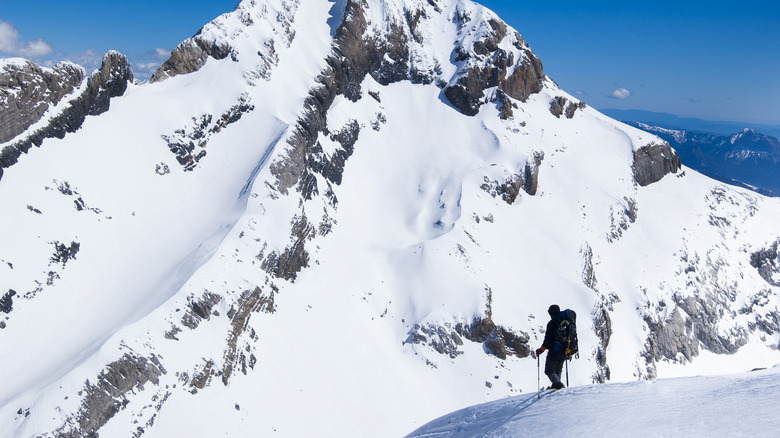
raulbachiller/Shutterstock
Ordesa y Monte Perdido is undoubtedly one of Europe’s most stunning mountain destinations. The sight of spectacular Ordesa Valley, with its enormous limestone peaks, can easily give Yosemite and Banff a run for their money; it’s that gorgeous. Located in the Spanish Pyrenees and having an area of more than 60 square miles, this national park will be a pleasant surprise for all mountain adventurers who want to discover something lesser-known.
Torla-Ordesa is where you start your exploration; there’s a visitor’s center to supply you with maps and recommendations. There are 22 hiking routes in the park with varying degrees of difficulty. From the laid-back Horse Tail path to the Arripas waterfall for beginners to a challenging Monte Perdido peak trekking for experienced mountaineers, there’s something for everyone.
Visiting Ordesa y Monte Perdido National Park also gives you a great chance to enjoy the snowshoeing trails across the scenic local terrain. Alternatively, by car, you can navigate the most iconic spots like Añisclo Canyon and Arrazas Canyon. The road network is well-maintained, and the window views are set to be wonderful.
Hohe Tauern National Park, Austria
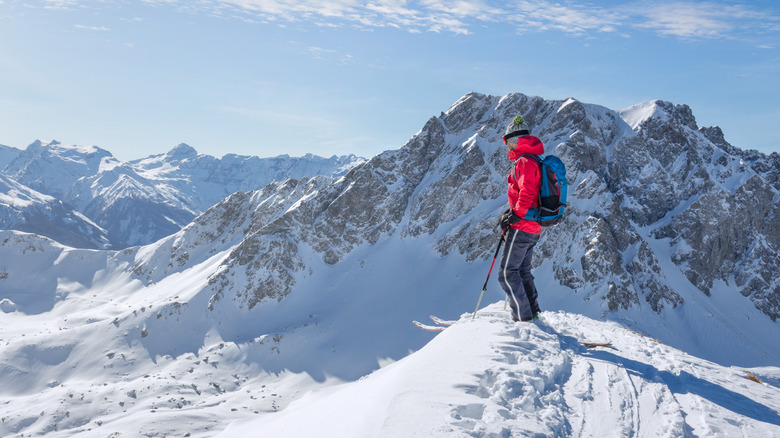
mRGB/Shutterstock
A quintessential Austrian alpine winter holiday awaits you in Hohe Tauern National Park. Not only is it full of magnificent mountain vistas, but with 716 square miles of protected area, it is also the Alps’ largest natural reserve. That’s why coming to the Hohe Tauern in winter feels like entering a microcosm of snow-filled adventures. More than 540 miles of runs in the resorts will ensure top-notch active, fun skiing, snowboarding, and sledding down the white slopes — all of it to the mind-blowing panoramas of the high peaks. Then, there is a developed system of cross-country skiing trails where both beginners and hardcore fans of the sport can find something for themselves.
The immense scale of the park means that you can easily spend a week or two here fully immersed in the winter pleasantries that Austria expertly organizes. Children will have a blast on many toboggan pistes, the whole family can embark on a snowshoeing journey across the valleys, and there’s always a place for relaxed, fresh air-filled hiking.
Þingvellir National Park, Iceland
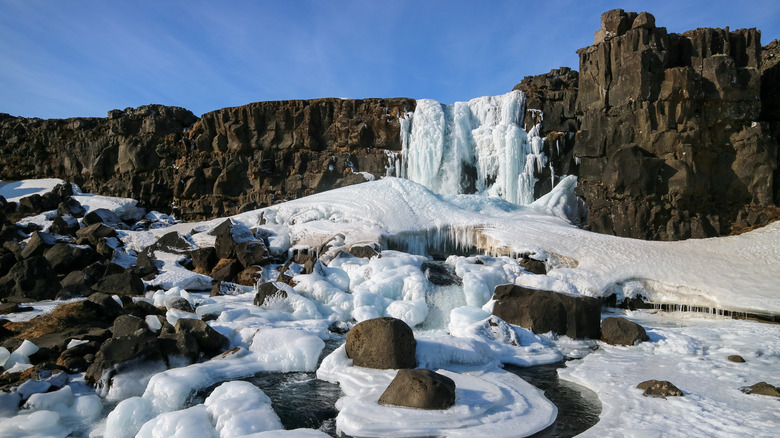
NickHeller/Shutterstock
Just 27 miles north of the country’s capital, Reykjavik, you will find Þingvellir. It’s pretty special among European national parks. There’s a combination of beautiful landscapes and ancient history here. It’s more of a national shrine than a mere natural attraction. In 930, the Viking settlers of the island held the very first assembly meeting surrounded by this vast volcanic environment. The parliament’s meeting place was at Lögberg, or the Law Rock, and you can see this important democratic symbol on a relaxing winter hike.
Þingvellir works best for pensive outdoor walks. It doesn’t require much preparation or stamina to be enjoyed. That’s why a trip here is among the top family-friendly things to do in Reykjavik. Winter is one of the best times to come to Iceland to skip crowds. The menu of outdoor fun includes walking through a raft gorge between North American and Eurasian tectonic plates, witnessing the glory of Þingvallavatn (Iceland’s biggest natural lake), admiring the photogenic 44-foot-high Öxarárfoss waterfall, and looking into the blue abyss of Silfra fissure. You can also opt for a horse riding tour for a more atmospheric winter visit.
Lofotodden National Park, Norway
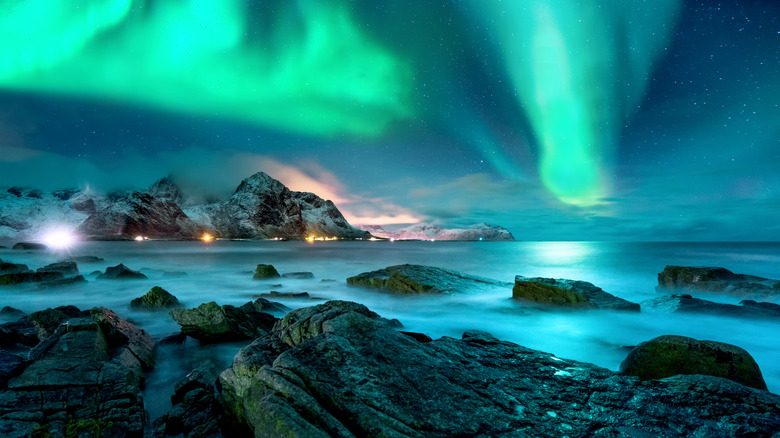
Weston/Shutterstock
As you approach the Lofoten Islands by boat, a marvelous panorama unfolds. Teeth-like peaks rise from the ocean waters as some kind of ancient wall fit for the giants. The snow cover makes the vista even more overwhelming; you’re getting chills from entering a true winter wonderland. What awaits you here are hidden beaches surrounded by colossal alpine mountains, valley hiking trails, quaint fishing villages, and some of the most spellbinding views on the globe. While winter in Northern Norway may sound intimidating, the presence of the Gulf Stream makes the weather very mild, although unpredictable too.
In winter, Lofotodden National Park has no crowds and has a special snowy allure. Be aware that a trip here is an end-of-the-world kind of journey, a bucket list variety. The best way to get in is by ferry from Bodø or by air to Leknes and Svolvær. The villages of Å, Sørvågen, and Tind are great bases for exploration. Expect uber-scenic hiking trails, isolated oceanic beaches, climbs to panoramic peaks, and encounters with pristine nature. Also, Lofotodden National Park is among the best places in Norway for seeing Northern Lights. Minimal light pollution and closeness to the Arctic Circle make it an almost guaranteed attraction during winter. Use NorwayLights to track the chance of spotting the Aurora.
Pyhä-Luosto National Park, Finland
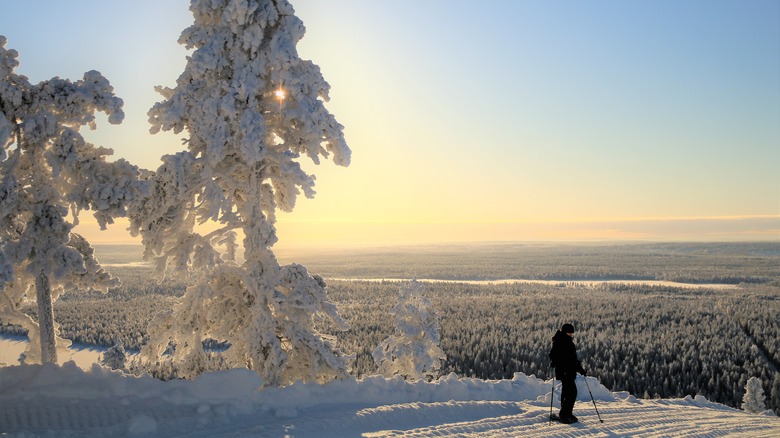
GeGiGoggle/Shutterstock
Picture yourself snowshoeing back to your ice hut as the vivid green tongues of aurora borealis dance in the clear night sky above. Welcome to Pyhä-Luosto National Park in Finland. A treasure of the Lapland region, it’s one of the most magical ways to experience Northern Europe. Also, winter makes it absolutely stunning. The infinite local pine tree forests start wearing white clothes, the gentle peaks of fells (the tundra hills) glisten, and nature goes into charming hibernation. Start your Lapland adventure in Pyhätunturi by checking the park’s visitor center, which will provide all the maps and rental options. Booking a hut is a must for an unforgettable experience of encountering the Northern Lights in the wild.
As for winter adventures, there will be plenty. Pyhä-Luosto National Park has an extensive network of snowshoeing and cross-country skiing trails. These outdoor activities are also the best way to get the most out of the park’s arctic expanse. For higher altitude fun, there’s Pyhä Ski Resort. Carbon-free and sustainability-focused, it’s among Finland’s best destinations for skiing and snowboarding. Other cool local activities include ice fishing, ice climbing, and snow surfing.
Pembrokeshire Coast National Park, U.K.
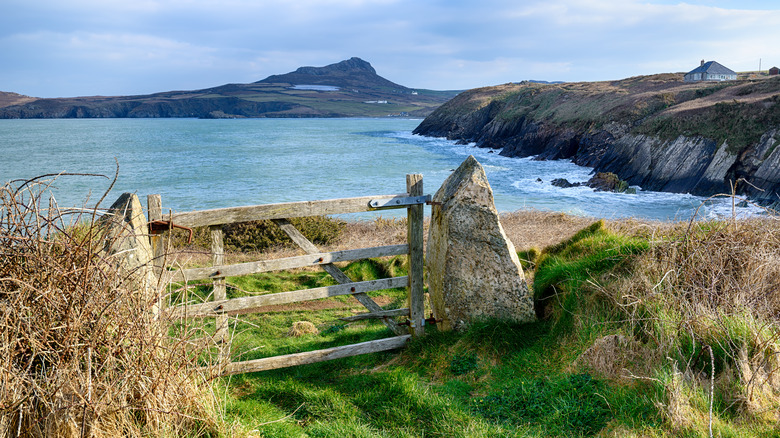
Helen Hotson/Shutterstock
A winter break on the Welsh coast sounds thrilling. When your destination is the captivating Pembrokeshire Coast National Park, it’s even better. The landscapes here are the ones for the paintings and fantasy movies. Rugged cliffs compete with long sandy beaches for the St. Brides Bay waters. The network of designated coastal paths brings this beauty closer to you — all of it to the sound of seabirds like kittiwakes, storm petrels, and even puffins. Moody weather, stronger winds, and mightier waves define winter at Pembrokeshire, but that should not prevent you from coming to this crown jewel of the U.K.’s national parks.
One of the reasons for that is what the park calls “fireside winter walks.” In a true Welsh fashion, the natural exploration here is closely connected to an ultra-cozy lounging by the fire at the local pub. There are even six special hiking trails that include such a pastime: Carningli, St Davids, Angle Peninsula, Rosebush, Tenby, and Stackpole Circular. Pembrokeshire has got you fully covered in winter. Embrace the beauty of the coast, warm up at the pub, and have the best slow travel experience.
Bavarian Forest National Park, Germany
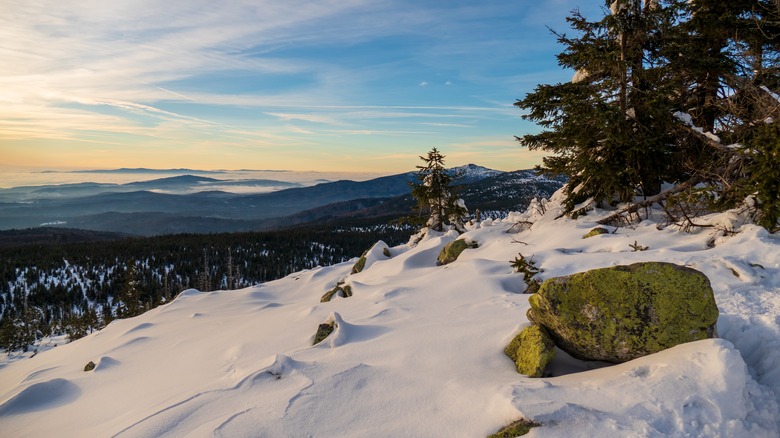
ElegantPicture/Shutterstock
Being in the woods in winter is akin to a high-quality meditative session. Snowy crownes calm you down, occasional wildlife encounters cheer you up, and the feeling of a hero’s journey-like adventure fills your heart with joy. But finding a proper forest for such activity can be challenging. Thankfully, there’s Bavarian Forest National Park, which checks all the boxes for a dreamy escape to the woods. Covering almost 60,000 acres, this area is an ultimate wilderness playground. The one welcoming you with open arms boasts a 217-mile network of snowshoeing trails and 49 miles of cross-country paths.
Get a unique perspective on the Bavarian Forest by visiting the Baumwipfelpfad (or treetop walk) in Neuschönau. This 144-foot wooden structure is among the region’s most striking attractions, allowing you to enjoy the panorama of the mythical woodland from above. Another noteworthy free-to-visit animal enclosure is Tier-Freigelände in National Park Centre Lusen, where bears, lynxes, and European bison live.
Vanoise National Park, France
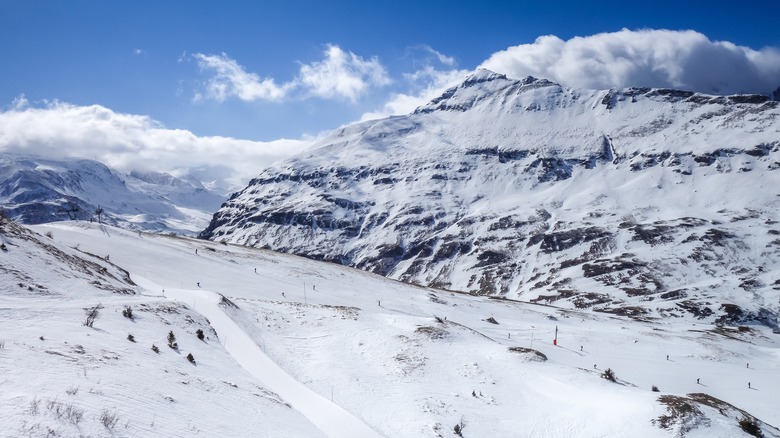
Daboost/Shutterstock
Sky-high is one good way to describe the magnificent Vanoise National Park located in the Savoy region of France. Here, 9,800-(plus)-foot peaks dominate its mind-blowing panoramas; everywhere you look is a landscape of a breathtaking sort. It is 332 square miles large and proudly the first national park in the country (founded in 1963). Winter is when the mountains are bathing in the sun-kissed snowy glory. The most popular activities during colder months are naturalist hikes with a chance to respectfully meet the furry locals like chamois, ibex, and hare. Picturesque villages off Pralognan-la-Vanoise and Termignon are where you start your adventures.
While the nature of Vanois National Park remains largely intact from the resorts, it doesn’t mean that you can’t profit from the winter sports proposition of the French alpine towns nearby. Aussois is a spot where you can embark on dog sledding journeys, try skijoring, and ride a snow scooter. And then, for all the slope enthusiasts, there’s the glorious Val-d’Isère with 186 miles of runs, 87 ski lifts, and vistas of the Alps so epic you’ll be left open-mouthed.
UNESCO Biosphere Entlebuch, Switzerland
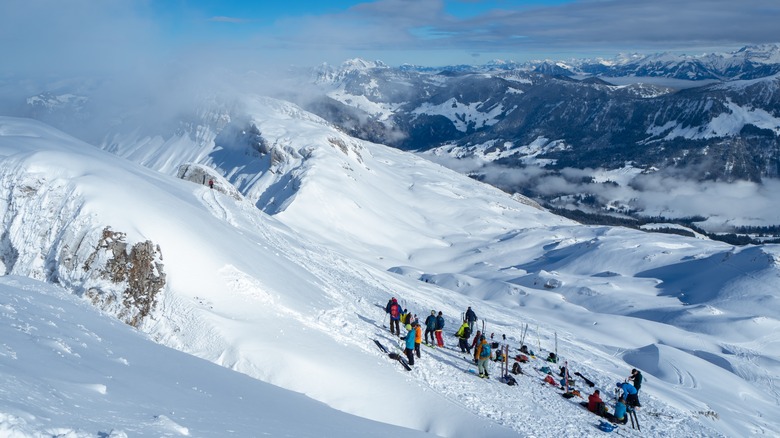
Thomas Stoiber/Shutterstock
Entlebuch is a little bit different from the other natural parks of Switzerland. It is a land of dramatic moorlands and karst mountains. Located between Bern and Lucerne, this park is somewhat of an open secret in a country famous for stunning vistas everywhere you look. Nicknamed “Wild West” for its barren landscapes and yet-to-be-discovered status, UNESCO-protected Entlebuch is a delight when the snowy season comes. The Alps-overlooking moorlands become vast snowshoeing and cross-skiing treks perfect for unhurried exploration. Rugged Dolomites-reminiscent peaks of the karst Alpine foothills set the perfect postcard scene.
Don’t worry; there will be enough active slope-conquering; we’re in Switzerland, after all. Not one but two skiing regions are found within the UNESCO Biosphere Entlebuch. Marbachegg and Sörenberg represent a more beginner-friendly and less crowded alternative to the resorts in the high Alps. A total of 62 miles of slopes is more than enough for a superb Swiss winter sports-filled holiday. Vibrant après-ski scene and plenty of chalets and fondue-serving mountain restaurants are included.
Abisko National Park, Sweden
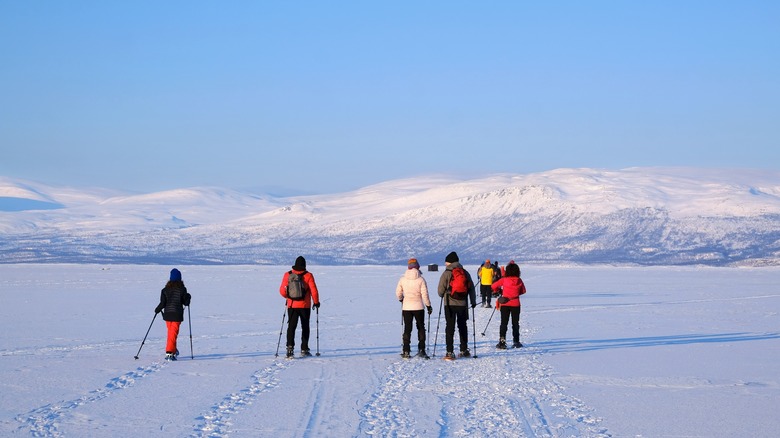
iwciagr/Shutterstock
If your idea of a national park visit is to escape from it all, Abisko National Park would be pleased to welcome you. Set more than 100 miles north of the Arctic Circle, it’s a land where Northern Lights in winter are as frequent as rain in autumn in Vermont. The wild tundra landscapes reach as far as eyes can see, and reindeer is king. This national park is in the Lapland region where indigenous Sami people live. While on paper, a trip here sounds like something out of Jules Verne’s books, it’s pretty straightforward in the 21st century. A daily overnight train from Stockholm takes you to Lapland’s permafrost in 17 hours. Just be sure to come prepared; it’s a secluded place where animals outnumber humans by far.
Once you’ve managed to get to Abisko, you will be gifted with some of the most unique natural experiences one can witness on Earth. Aurora Borealis is almost guaranteed in winter; lodgings at Abisko village will work great as your dark sky vantage point. It’s arctic Sweden at its finest here, with well-marked hiking trails through the wilderness, snowshoeing and cross-country routes, and tall hills that double as fantastic viewpoints and skiing centers. Mount Njullá is the one to visit for the cable car and laid-back downhill skiing.
Cinque Terre National Park, Italy
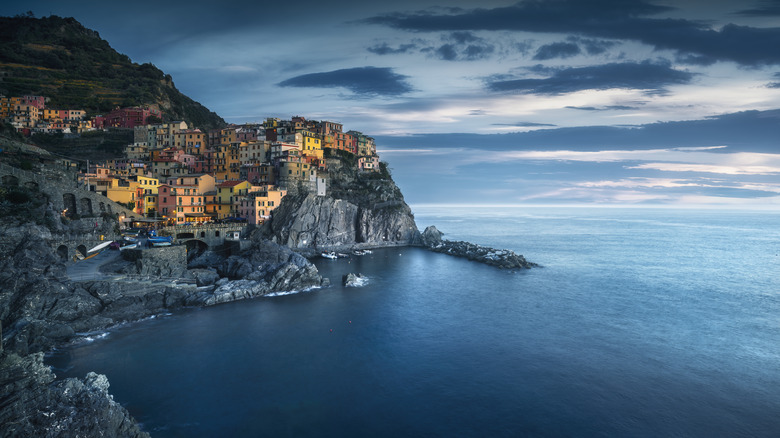
Stevanzz/Getty Images
European winter national park trips shouldn’t only include snow-filled experiences. Picture-perfect Cinque Terre National Park is among those places that are best visited during colder months. Not only will you enjoy the more tranquil side of iconic seaside Ligurian towns, but you will also escape the crowds that can make coming here in summer unbearable and unsustainable. There’s nothing ordinary about these five spectacular destinations occupying the rugged coastline North of La Spezia. Not accessible by cars, these communities are served by a frequent regional train, and that’s the best way to get in.
Winter in Cinque Terre holds its special kind of Ligurian magic when days next to the sea are capricious, the life in the villages is slower, and the lush Mediterranean flora is in a state of half-sleep. Still, it will be mild and comfortable, so be sure to engage in coastal hikes, visit the cascading vineyards (a region trademark), and indulge in the local cuisine at trattorias. You should also give in to the pleasures of dolce far niente (translating to “sweetness of doing nothing”) by occupying a terrace on a piazza in any of the Cinque Terre towns. Colder months are ideal for spending more than a day here to fully feel the enticing Mediterranean living.
Our methodology
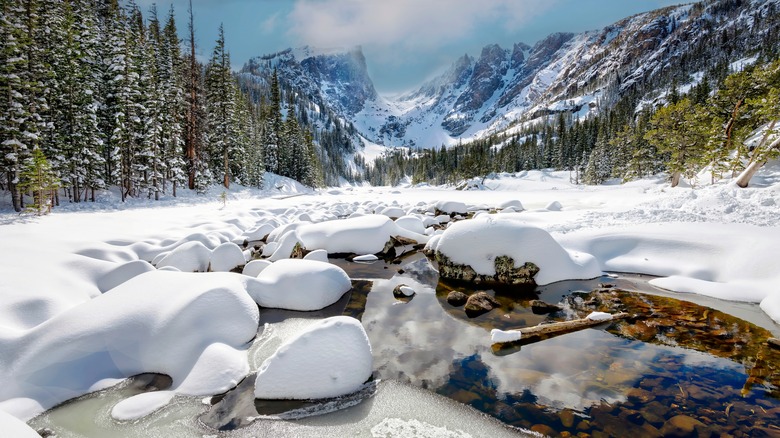
John Couture/Shutterstock
This ranking is based on travelers’ reviews on Tripadvisor and Google about visiting European national parks in winter. The article considers people’s opinions regarding the best activities, top tourist attractions, and general suggestions. Another basis for choosing entries for this story stems from expert knowledge of the selected national parks and experiencing them first-hand.
The advice from the official tourist boards and park authorities is also used to provide the fullest and most up-to-date information on visiting the chosen national park during winter months. This piece covers a diverse set of destinations with national parks from both Northern, Southern, and Central Europe.

